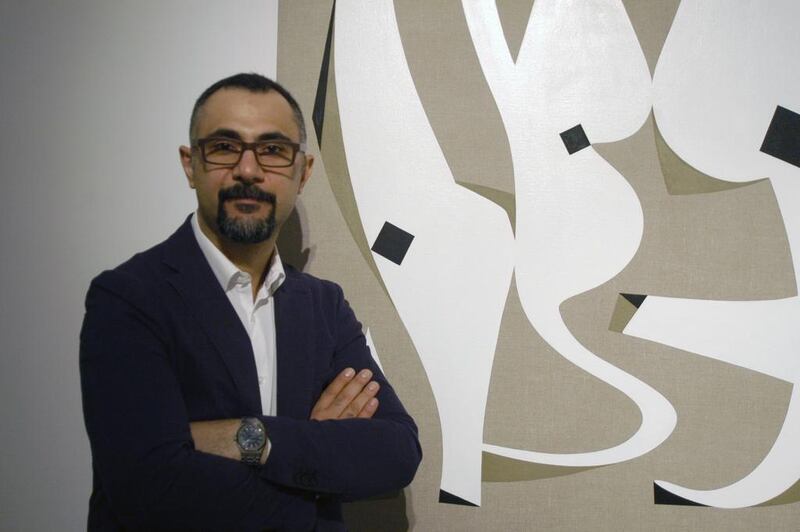Renowned calligraphy artist Wissam Shawkat, whose latest exhibition Monumental 11/11 is showing in Dubai, talks about why calligraphy should be viewed as a bona fide art form.
How did your new project, Monumental 11/11, come about?
November 11 is the date when I left Iraq, 13 years ago. Now I’m departing from calligraphy as a text. Most of calligraphy – when you talk about classical work – is just a beautiful text written in a form. What I’ve done here is to celebrate the letters themselves – their form and shapes.
How does the work relate to Iraq?
Leaving Iraq was a new birth for me. It liberated me from many things, and the concept of liberation applies here in this show.
Have you been back to Iraq since leaving?
No, never. I don’t think I want to. The Iraq I left is no longer there.
You’ve said that the show incorporates references to Dadaism, Futurism and the Bauhaus. What is it about those movements that captured your imagination?
These movements focus on basic colours and basic forms, and relate to how I fell in love with calligraphy when I was 10 years old. My schoolteacher wrote four letters – alif, bay, jeem and daal – in very simple form: ruqa, which is a basic style. I use these letters the most in the exhibition. Why did I fall in love with calligraphy? I didn’t see a beautiful piece, just these simple letters written in chalk on a blackboard. It must have been the form – the hierarchical values, the shapes. Movements such as cubism also play with geometrical forms. My work is a dialogue between western abstract art and the tradition of Arabic calligraphy.
How important is it that people can read the words in your work? Are they missing part of the work if they cannot?
Honestly, no. I’m totally against this idea. For me, legibility is the enemy of the creative. I have a saying: I don’t want people to read what I have written, unless the work is that. I want people to look at the design, the relationships of the composition. I need people to discover what’s written. If you write something just to read it, it’s not art. Here, I’m liberating calligraphy from the text. It’s just a visual form.
You’re a big promoter of this idea that calligraphic art should be seen as an art form. Why do you think there is resistance to this?
There is big resistance. Go to any big art fair, even here, and, probably, you will see some work that has calligraphy, but not done by someone who is a proper calligrapher. People take a beautiful piece of calligraphy and stick it in the art world and say they have created a work of art. But in reality, in order for calligraphy to develop, it comes from calligraphers themselves. Unfortunately, calligraphy practice is still seen as sacred, something you shouldn’t touch, shouldn’t change. I’m against that. I spent 30 years practising. I’m happy now to depart from where I was and develop it further.
Calligraphers should be more open. Art schools should be more open to more movements of what happens around the world. We calligraphers shouldn’t say we aren’t being accepted as artists – it is a problem in our hands. Others sees us as craftsmen, not as artists.
I found a beautiful quote in an interview you gave, by the German calligrapher, Hermann Zapf: "Calligraphy is the most intimate, personal, spontaneous form of expression." What does that intimacy mean to you and how is it expressed in your work?
All my life is about calligraphy. I’m an engineer by practice, but I left this background and focused on what I love. If someone really loves something, you can achieve higher grades. I have a special intimacy with calligraphy. That’s why I love that quote by the late Hermann Zapf. Calligraphers love shapes and forms and spend hours on each form. If you don’t have that patience, that intimacy, you won’t get anywhere.
• Monumental 11/11 at Tashkeel, Nad Al Sheba, Dubai, runs until January 7, www.tashkeel.org
artslife@thenational.ae






